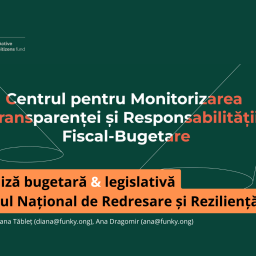
Let’s explain today’s civil rights and liberties to students, through sensory exploration and case studies on Romanian communism.
The Story:
Our generation’s Project. We were born and (also) grew up in the 80s. We queued at the milk store and invented games to play at home when the lights went out. Our parents shielded us from adversities, so we didn’t make much of the tragic ending of the Romanian Socialist Republic, although we did assume that things weren’t exactly OK. 30 years after the Revolution, Romania remains the only country in Eastern Europe that lacks a recent history museum to tell the story of day-to-day life during the communist regime.
Who we are
Funky Citizens and Modulab, along with tens of other volunteers from various fields: architects, communications people, historians, teachers and many, many, others.
What we’re doing
An interactive educational experience: we aim at explaining democratic rights and liberties to students, through sensory exploration and case studies on Romanian communism.
What’s already available out there
There is a growing number of distinct initiatives that preserve and archive recent memory, from playful spaces like the Museum of Communist Consumers, to more serious spaces, like the Sighet Memorial. There are also small museums in apartments, like Ferestroika, along with unfinished projects like the Museum of Everyday Life in Communism in Botoșani or the Museum of Collectivization.
How we’re different? A civic education lab
We want to tell the story – in an admittedly subjective manner – of what we remember about life in communism. We are doing this to be able to take our children there, have them explore, touch objects and discover what their life would have looked like if they were born during the Cold War. We are recreating a typical 80s apartment, but behind this seemingly banal setup there are many stories capable of acting as conversation starters about “what it was like” at home, with family. Maybe it’s a first step towards social catharsis as well, who knows?
How we’re financing this project
The project already has access to financing from the US Government, thanks to a grant from the IVLP Alumni program, which will be used to pay rent & utilities for the space for a year, and for building the installations inside the space. The grant will also be used to take a part of these installations to 5 major cities in Romania, in an educational caravan that will start moving in the spring of 2019.
What we need right now
We have secured the space but we need to get the project going by cleaning and renovating the apartment.
The space we are restoring for this project is a roughly 100 sqm floor in the Hala Traian area (Sector 2 in Bucharest, the sector with the biggest number of high schools). The apartment has not been inhabited for quite some time, so it needs a thorough cleaning, which is relatively expensive, given the dimensions of the apartment. We cannot start to implement our educational concept in the space until we take this first step of cleaning up the space: priming the walls, bleaching the mosaic, mending cracks, painting the walls in all rooms, polishing and varnishing the floors, painting the doors and windows. The building supplies for this project will cost 4.000 RON with an added 12.000 RON for labor.
What you’ll get
5 EUR donation
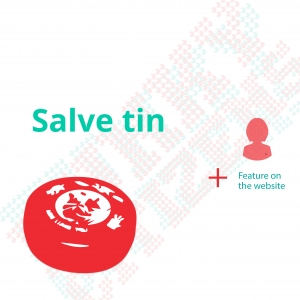
15 EUR donation
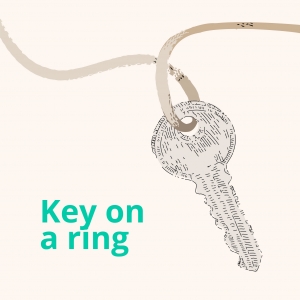
100 EUR donation
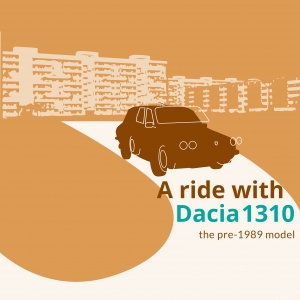
200 EUR donation
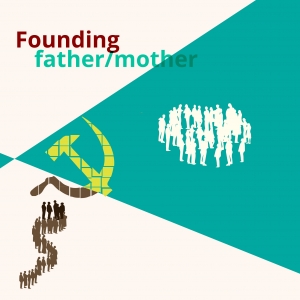
300 EUR donation

Impact
The funds raised from this campaign will be used for the hygienization of this space and creating interactive installations. Most of the funds will be used for cleaning and painting the 270 sqm of painted walls and the 280 sqm of textured walls and for polishing the 72 sqm of wooden flooring and bleaching the mosaic in some rooms. By contributing to financing this project, you will have the opportunity to lay the foundation of this necessary space.
Risks and challenges
- The risk of slipping into past-ridden nostalgia.
This risk only applies to the parents and teachers of the students who will be involved in the project. There is also a risk associated with the students, which is to paint too romantic of a picture about the communist period in Romania.
- The risk of riling the historian and curator community.
We contacted some historians and curators in the research phase of our project, inviting them to a brainstorming session. It became clear to us then that we are not developing a museum (at least not in the first phase, due to the lack of resources, such as time and money). Consequently, we decided that the name of “The Museum of Everyday Life in Communism” was unfit for this project, even though this was what we had referred to it as initially. Therefore, we will not be giving a comprehensive historical account, but we will be using the instruments of everyday life to evoke relevant narratives for a series of rights.
- The challenge of staying focused on civic education and not deviate from this course.
Indeed, the main challenge we face is keeping our focus on the subject of civic education (rights, liberties, the functioning of public institutions), without drifting off into ideological or historical debates. We do not wish our project to be a revengeful initiative, aimed at denouncing the evils of communism. We do not have an exhaustive approach meant to refer to each decade in communism. We intend to zoom in on the 80s, as an outset for discussions on rights and liberties. We will certainly not manage to please everyone, but we will try to create a memorable experience for students, which hopefully will stimulate personal revelations and family discussions.
You can also contribute in different ways than donating funds: donate objects or time! This is the kind of project that works best when different types of energy come together. If you cannot support us financially, get in touch with us and become a volunteer for our project. Moreover, donations of communist era memorabilia are always appreciated. Last but not least, physical labor on the apartment will be required, as well as research efforts, that can be done remotely.
Questions and answers
- Do we really need this space, when the country has so many other pressing issues?
Yes, because we must explain democratic rights and liberties to children, if we do not wish to slip into an authoritarian system. This is a crucial investment, which will pay off in the long run.
- Who is this project aimed at?
Mainly, this project is for middle school and high school students, because they are at an age when they are starting to ask questions like “What was it like?”. We want to offer them thought-provoking experiences, that can prompt even more questions and open a “discussion” that they can then continue in other contexts – at school or at home.
- Have you thought about partnering up with similar initiatives?
Yes, in time, we plan on creating a network of interconnected initiatives. We even want to involve many of them in our educational project directly. We have a list of potential partners we plan on getting in touch with, including guided tours and similar museums.
- Do you have experience in creating interactive educational experiences?
We already have the civic education project and we have put together a multidisciplinary team for this project, which includes teachers, journalists and creators. If you wish to join us, drop us a line.
- Will access to the space be free of charge? Will this be opened permanently?
Yes, the access will be free of charge. Of course, any visitor can contribute with a donation (in person or online), if they wish to support our project and its future ramifications. The visiting schedule will be posted on our website (in progress), and the class visits will be scheduled in advance. We are thinking to open our doors to the public for a day during the weekend, to maximize the audience for this project.
- How will you involve university students in this project?
Our plan is to work with them as volunteers, so that they can be present for a few hours every week, as facilitators for students. They will, of course, be trained for this project.
- Are there already funds allocated to this project exclusively?
Yes, the project has been awarded a 25.000$ grant from the US Government, until the end of August 2019. However, we need extra financial support to be able to generate a memorable and authentic experience and to keep this project alive after August 2019.
- Have you thought of involving companies or state authorities in this project?
Yes, we are in touch with several companies and state institutions, whom we have asked for specific support. We will always be open to ideas of involvement from any type of entity.


